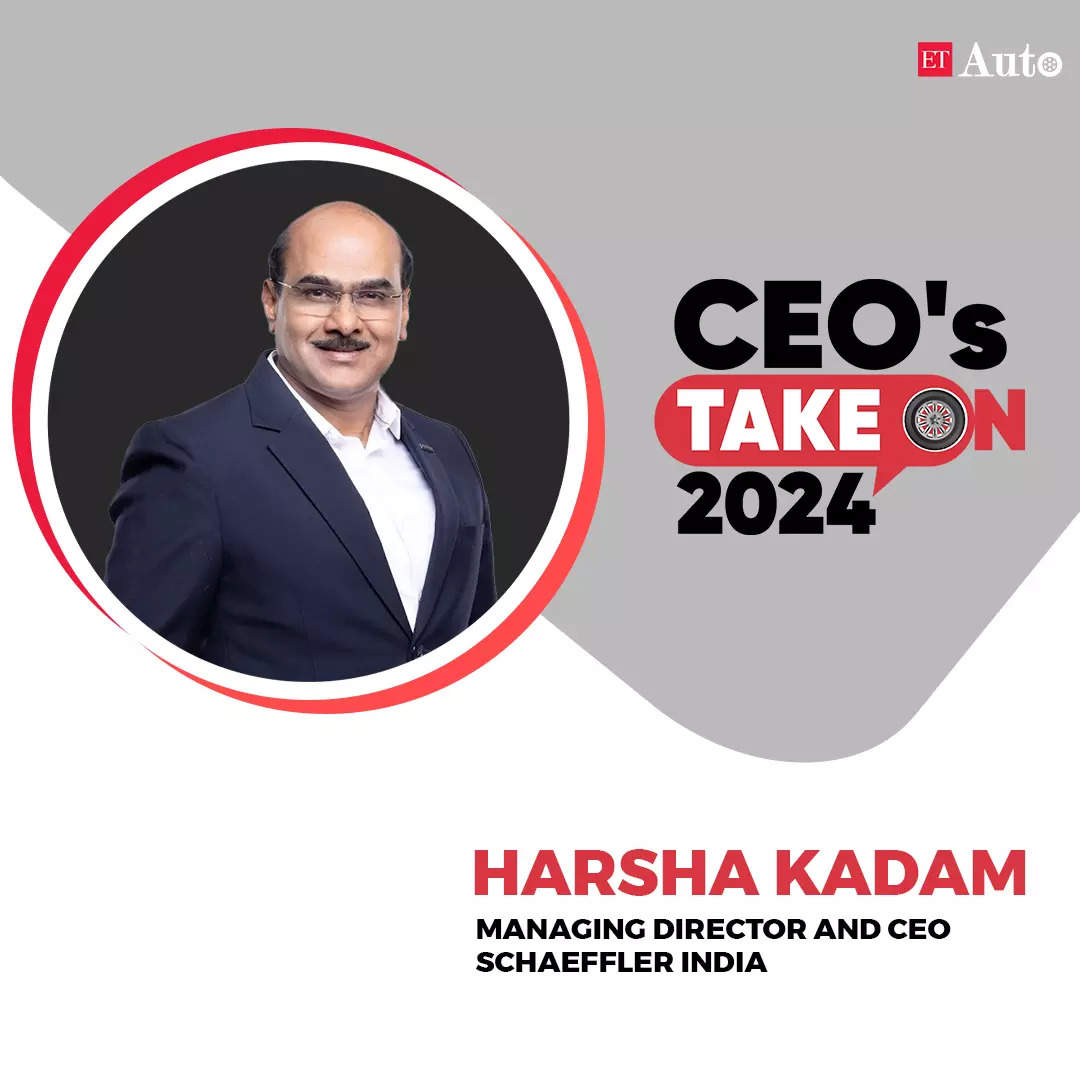“The Indian auto component industry envisions itself as a dynamic and sustainable part of the global automotive ecosystem. India is expected to emerge as a leading market and supplier for electric vehicle components, capitalizing on its vast domestic market and manufacturing capabilities,” Harsha Kadam, Managing Director and CEO, Schaeffler India, told ETAuto.
 Harsha Kadam, Managing Director and CEO, Schaeffler India
Harsha Kadam, Managing Director and CEO, Schaeffler IndiaEdited excerpts:
Q. After two consecutive years of swift growth in the auto component industry’s performance, what is your outlook for 2024?
The Indian auto component industry had significant growth in the past two years owing to the strong domestic demand, increasing exports, and a noticeable shift to electric vehicles (EVs). Despite the challenges of raw material shortages, rising competition and the potential for a global economic slowdown, the outlook for 2024 remains optimistic.
This optimism is fuelled by several factors including the increased vehicle production subsequently increasing the demand for auto components, the shift towards EVs, supported by government incentives and growing consumer interest, and the government initiatives aimed at promoting domestic manufacturing, such as PLI schemes, along with the efforts to enhance R&D and exports.
Q. What are the key micro and macro indicators that will play an important role in shaping up the auto component industry in 2024?
Several micro and macro indicators will shape the industry’s trajectory in 2024. On the micro level, vehicle sales, efficient supply chain management, rapid technology adoption, and infrastructure development for EVs are crucial. Notably, the anticipated increase in charging stations and government incentives for EV manufacturing highlight the focus on electric mobility. Macro factors like robust economic growth, supportive government policies, and global automotive trends will significantly impact the industry. These indicators collectively underscore the dynamic interplay shaping the industry’s future.Q. What is your view on the readiness of the component industry for the shift towards adoption of multiple fuel technologies and electric vehicles (EVs) in 2024?
The Indian auto component industry is actively preparing for the adoption of multiple fuel technologies and EVs. This preparation is characterized by the investments in R&D for developing technologies relevant to EVs and alternative fuels, and the partnerships with global OEMs for technology transfer and joint development efforts. Government support through policies and incentives is also encouraging both manufacturing and adoption of EVs and cleaner fuel technologies, and the skill development initiatives ensure the workforce is equipped for new technological advancements.However, challenges such as infrastructure development, cost competitiveness, and scaling production to meet the EV demand need to be addressed.
Q. What will be the key technologies that will shape the next decade of the auto component industry?
The key technologies that are expected to shape the next decade of the Indian auto component industry include the development of components for EVs and hydrogen fuel cells and the technologies enabling vehicle connectivity that will transform component manufacturing, focusing on sensors, software, and cybersecurity. Safety and automation technologies will also become increasingly significant, driving demand for sophisticated components along with the adoption of advanced materials for lighter, more efficient vehicles.
Additive manufacturing and 3D printing are expected to revolutionize component design and manufacturing, offering customization and efficiency gains.
Q. Do you think the Indian auto component industry has the potential to become a global manufacturing hub and play an important role in the global value chain?
India’s potential to become a global manufacturing hub for auto components is supported by lower manufacturing costs, a robust talent pool capable of high-quality manufacturing and innovation, and policies encouraging manufacturing and exports.
A diversified product portfolio meeting various market needs and the growth in exports with an increasing global demand for Indian components will also strengthen its position in the international market.
Q. What are the key factors that work in favour of India and what limitations do we have as a country?
Favourable factors include cost competitiveness, skilled workforce, continued growth in domestic market demand, and government policies.
However, India also faces some limitations that need to be addressed to capitalize on its potential fully. Significant improvements in infrastructure, investments in innovation and R&D, and building capacities to support the EV transition, will solidify its growth trajectory and reinforce its position in the global automotive value chain.
Q. What is your vision for 2030 for the auto component industry?
By 2030, the Indian auto component industry envisions itself as a dynamic and sustainable part of the global automotive ecosystem.
India is expected to emerge as a leading market and supplier for electric vehicle (EV) components, capitalizing on its vast domestic market and manufacturing capabilities. This includes battery systems, electric motors, and power electronics.
The industry aims to significantly enhance its R&D capabilities, focusing on innovation in materials, manufacturing processes, and smart technologies. This would involve greater collaboration with academia, startups, and global technology leaders. Emphasizing sustainable practices, the industry also plans to adopt green manufacturing processes extensively.
By leveraging its competitive advantages, such as cost-effectiveness and quality manufacturing, the industry aims to expand its footprint into new and emerging markets. This will be supported by strategic partnerships and global alliances. Alongside, the adoption of Industry 4.0 practices is expected to transform manufacturing processes.
Recognizing the importance of human capital, there will be a strong focus on developing a highly skilled workforce. This includes training programs in new technologies, such as EV technology, advanced materials, and digital tools. The vision also encompasses continued support from the government through favorable policies, infrastructure development, and incentives to facilitate the ease of doing business.
", -->
Source Link






















